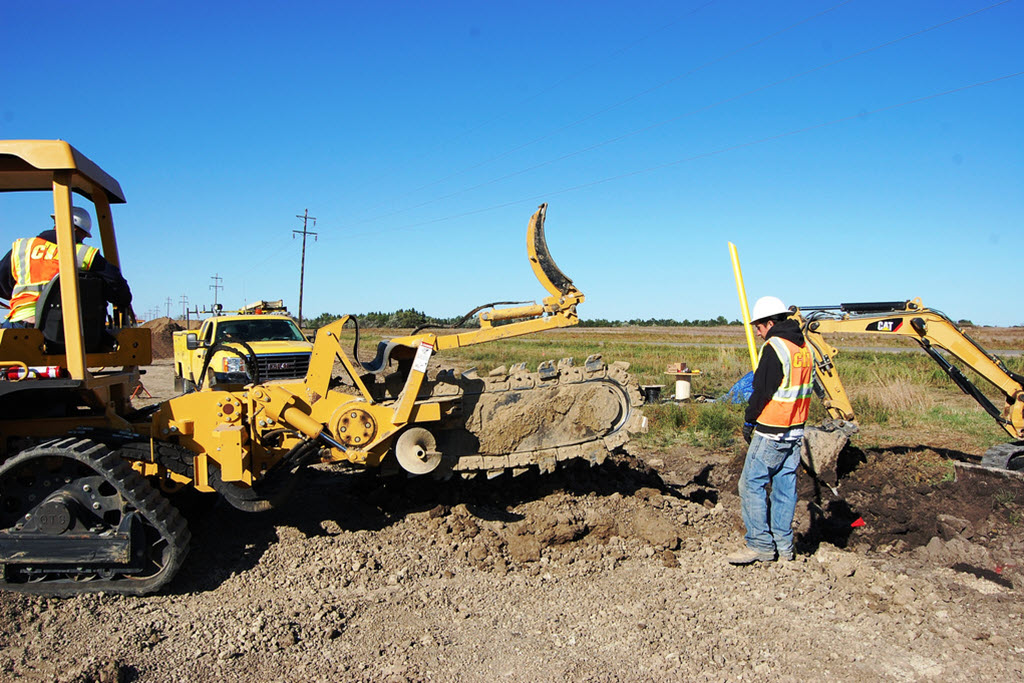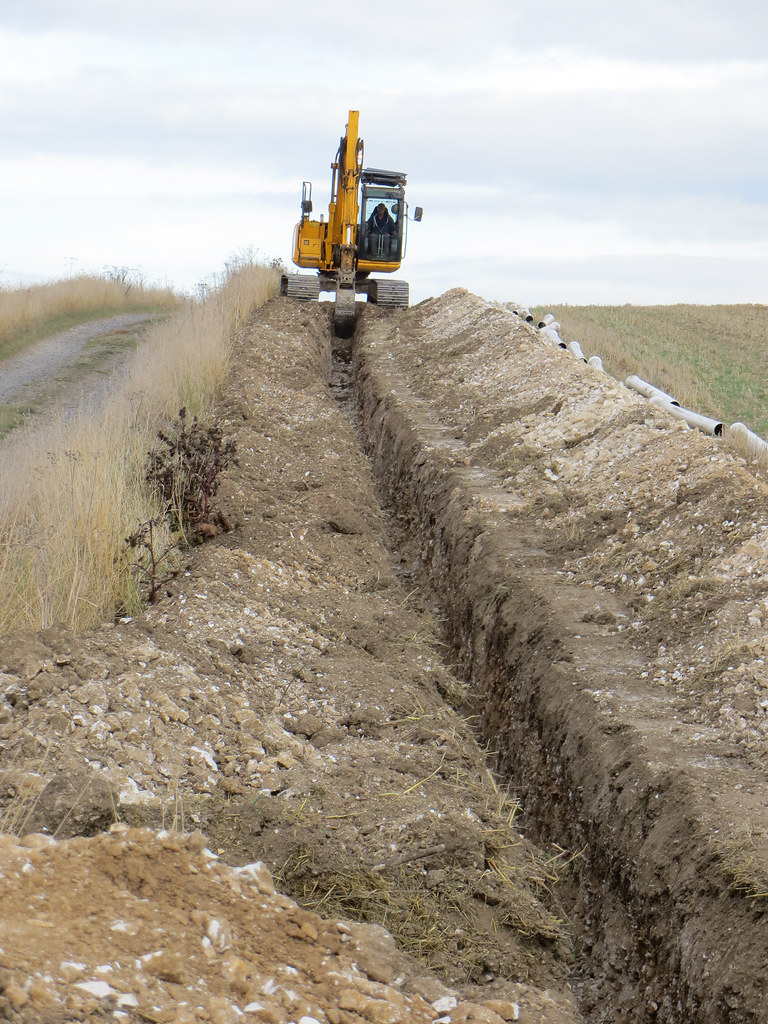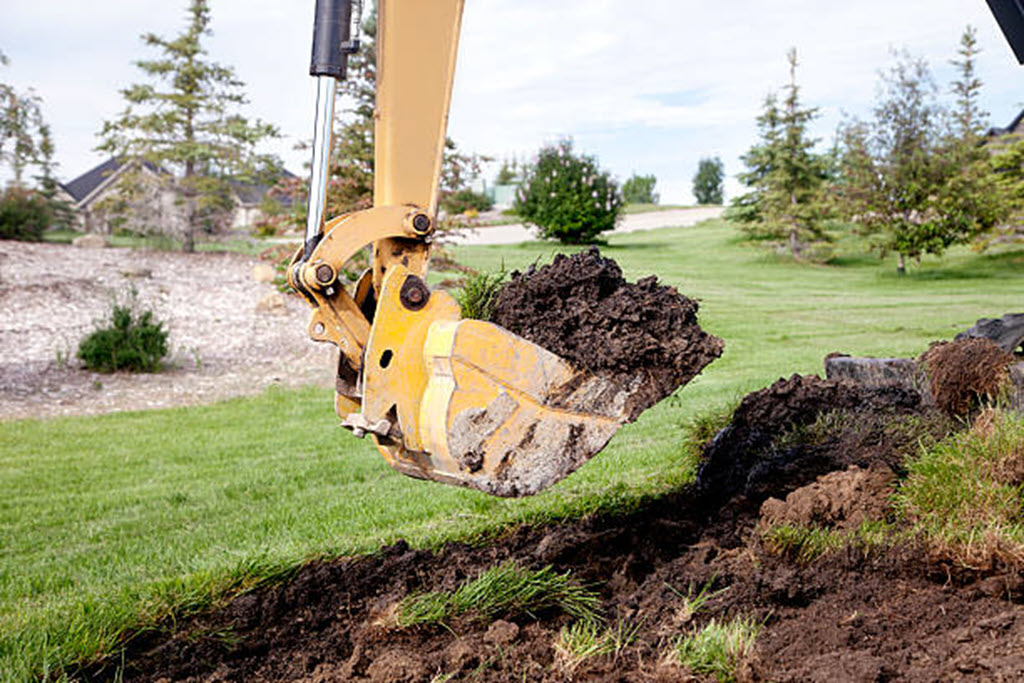Cable Trenchingsin Metamora MI
Cable Trenching Done Right for Secure Utility Installations
We Are Locally Owned & Operated For Over 37 Years
Contact Us Today!
We Serve Businesses In And Around The Following Cities:
About Cable Trenchings
Unlocking the Potential of Cable Trenching in Metamora
When it comes to the developing the modern infrastructure necessary for thriving commercial properties in Metamora, an essential yet frequently overlooked aspect is the practice of cable trenching. This process elicits an image of contradiction, incorporating a seeming antiquity-a ditch in the ground- with the high-tech requirements of today’s telecom and IT landscape. However, the reality is that cable trenching is a highly refined, technologically advanced practice that encapsulates a host of benefits for businesses. Let’s delve into the advantages, application, and process of cable trenching and its implications for businesses in and around Metamora.
Unraveling Cable Trenching
Cable trenching, in essence, is the practice of digging trenches to lay cables for communication, power lines, and other utilities. Local trenching contractors like D&J Contracting feature considerably in this process due to the inherent complexities and technicalities associated with it. Trenching offers myriad benefits, including reduced disruption to the environment and surrounding areas, improved safety, and facilitation of better utilities and communication infrastructure. Notably, businesses regard cable trenching as a crucial step in building commercial properties or upgrading existing ones, largely for these reasons.
Bringing the Benefits of Cable Trenching into the Spotlight
At first glance, cable trenching may seem like a rudimentary component of infrastructure development. However, the far-reaching implications of correctly digging a trench for propane lines and other utilities are undeniable. A quality trenching contractor ensures minimal disturbance to landscapes and surrounding structures during the installation process, positively impacting workplace aesthetics. Moreover, underground cable systems are less susceptible to weather-related interruptions, leading to greater reliability and less downtime for businesses.
The case of Metamora provides a perfect backdrop to illustrate the importance of cable trenching. Metamora, with its mix of older, historical properties and a blossoming urban area, requires nuanced and meticulous cable trenching and boring services. Take D&J Contracting, for instance. Their experienced team offers tailored trenching solutions that harmonize the new with the old without compromising either.
Decoding the Cable Trenching Process
Now that we have established the significance of cable trenching, it is pivotal to understand the ins and outs of the process. Broadly, the trenching process involves the assessment of utility requirements, planning the trench route, actual excavation, lay groundwork for cable support, utility installation, and finally, restoration of the trench. Each stage requires specific skills and equipment from trench digging services providers. It underscores the necessity of hiring reliable trench digging contractors or trench digging companies, not only in Metamora but also in any urban or semi-urban area.
Stakeholders’ involvement is also crucial at this stage, especially when trenching for utilities, to ensure that the excavation does not interrupt regular activities. Whether it’s an installation at a shopping mall, office complex, or industrial property, smooth coordination between the trenching team and property stakeholders allows for seamless completion of the project.
D&J Contracting: Your Partner in Cable Trenching
There is a host of trenching contractors near you, but few can match the proficiency and understanding provided by D&J Contracting. The company has demonstrated finesse in delivering trenching services to numerous commercial projects in and around Metamora over the years. Their collaborative approach, attention to detail, and commitment to safety and precision set them apart from other service providers.
With substantial experience in handling utility line trenching, D&J Contracting crew members are adept at tailoring solutions to suit the unique needs of each project. Whether it’s laying down a network of data or power cables for a new commercial building or trenching for a propane line in an industrial complex, they ensure a seamless and efficient process from start to finish.
That Makes Trench Sense!
And thus, we arrive at the conclusion of our deep dive into the world of cable trenching. The process is not just about digging a trench and laying some cables – it’s a strategic component of infrastructure development. Harnessing technical skills, creativity, and a considerable amount of planning, cable trenching offers businesses the backbone they need to enjoy uninterrupted utilities, better safety, and a cleaner landscape. Should you find yourself planning a new commercial property or looking to upgrade your existing ones in Metamora, services like those provided by D&J Contracting could be an investment well worth considering for the long-term benefits.
By embracing this remarkable technology, businesses can lay a reliable and resilient base for their physical infrastructure. In turn, it paves the way for a multitude of prospects, underpinning technology-driven growth, and fostering a sense of trust and reliability that is crucial for any commercial setting. Thus, cable trenching in Metamora could very well be the cornerstone of your property’s commercial success.
Cable Trenchings Gallery


Call Us Today to receive your Free Quote for
Cable Trenching in Metamora
Serving: Metamora, Michigan

About Metamora, Michigan
According to the United States Census Bureau, the village has a total area of 0.83 square miles (2.15 km), all land.
| Census | Pop. | Note | %± |
|---|---|---|---|
| 1880 | 236 | — | |
| 1890 | 314 | 33.1% | |
| 1900 | 313 | −0.3% | |
| 1910 | 276 | −11.8% | |
| 1920 | 271 | −1.8% | |
| 1930 | 293 | 8.1% | |
| 1940 | 281 | −4.1% | |
| 1950 | 390 | 38.8% | |
| 1960 | 452 | 15.9% | |
| 1970 | 468 | 3.5% | |
| 1980 | 552 | 17.9% | |
| 1990 | 447 | −19.0% | |
| 2000 | 507 | 13.4% | |
| 2010 | 565 | 11.4% | |
| 2020 | 594 | 5.1% | |
| U.S. Decennial Census | |||
As of the census of 2010, there were 565 people, 216 households, and 151 families living in the village. The population density was 680.7 inhabitants per square mile (262.8/km). There were 245 housing units at an average density of 295.2 per square mile (114.0/km). The racial makeup of the village was 98.1% White, 0.4% African American, 0.5% Native American, 0.2% Asian, 0.2% from other races, and 0.7% from two or more races. Hispanic or Latino of any race were 1.4% of the population.
There were 216 households, of which 38.4% had children under the age of 18 living with them, 56.5% were married couples living together, 8.8% had a female householder with no husband present, 4.6% had a male householder with no wife present, and 30.1% were non-families. 24.5% of all households were made up of individuals, and 7.4% had someone living alone who was 65 years of age or older. The average household size was 2.62 and the average family size was 3.11.
The median age in the village was 39.4 years. 27.8% of residents were under the age of 18; 5.6% were between the ages of 18 and 24; 24.1% were from 25 to 44; 30.7% were from 45 to 64; and 11.7% were 65 years of age or older. The gender makeup of the village was 48.5% male and 51.5% female.
As of the census of 2000, there were 507 people, 188 households, and 137 families living in the village. The population density was 765.4 inhabitants per square mile (295.5/km). There were 204 housing units at an average density of 308.0 per square mile (118.9/km). The racial makeup of the village was 96.84% White, 0.39% Native American, 0.20% Asian, and 2.56% from two or more races. Hispanic or Latino of any race were 0.79% of the population.
There were 188 households, out of which 33.0% had children under the age of 18 living with them, 60.6% were married couples living together, 9.6% had a female householder with no husband present, and 27.1% were non-families. 19.7% of all households were made up of individuals, and 6.4% had someone living alone who was 65 years of age or older. The average household size was 2.70 and the average family size was 3.14.
In the village, the population was spread out, with 26.6% under the age of 18, 8.3% from 18 to 24, 34.9% from 25 to 44, 19.7% from 45 to 64, and 10.5% who were 65 years of age or older. The median age was 34 years. For every 100 females, there were 92.0 males. For every 100 females age 18 and over, there were 97.9 males.
The median income for a household in the village was $58,088, and the median income for a family was $63,750. Males had a median income of $41,563 versus $26,563 for females. The per capita income for the village was $19,548. About 3.6% of families and 3.6% of the population were below the poverty line, including 1.4% of those under age 18 and 7.4% of those age 65 or over.
Call Us Today to receive your Free Quote for
Cable Trenching in Metamora
Related Services in Metamora, Michigan
We Serve Businesses In The Following Zip Codes:
48007, 48015, 48021, 48026, 48035, 48036, 48038, 48042, 48043, 48044, 48045, 48046, 48047, 48048, 48050, 48051, 48066, 48071, 48080, 48081, 48082, 48083, 48084, 48085, 48088, 48089, 48090, 48091, 48092, 48093, 48098, 48099, 48225, 48230, 48236, 48310, 48311, 48312, 48313, 48314, 48315, 48316, 48317, 48318, 48397